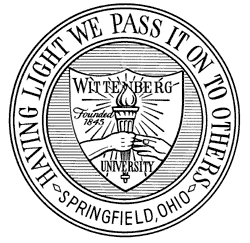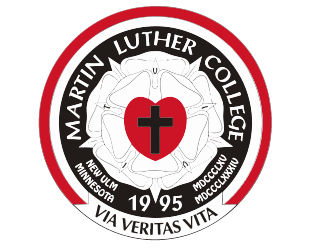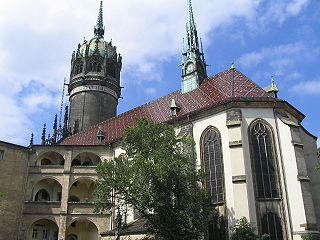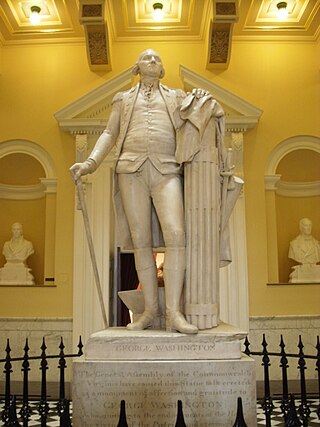
Wittenberg University is a private liberal arts college in Springfield, Ohio. It has 1,326 full-time students representing 33 states and 9 foreign countries. Wittenberg University is associated with the Evangelical Lutheran Church in America.

"A Mighty Fortress Is Our God" is one of the best known hymns by the Protestant Reformer Martin Luther, a prolific hymnwriter. Luther wrote the words and composed the hymn tune between 1527 and 1529. It has been translated into English at least seventy times and also into many other languages. The words are mostly original, although the first line paraphrases that of Psalm 46.

Concordia Seminary is a Lutheran seminary in Clayton, Missouri. The institution's primary mission is to train pastors, deaconesses, missionaries, chaplains, and church leaders for the Lutheran Church–Missouri Synod (LCMS). Founded in 1839, the seminary initially resided in Perry County, Missouri. In 1849, it was moved to St. Louis, and in 1926, the current campus was built.
Luther College is a private Lutheran liberal arts college in Decorah, Iowa. Established as a Lutheran seminary in 1861 by Norwegian immigrants, the school today is an institution of the Evangelical Lutheran Church in America. The upper campus was listed as the Luther College Campus Historic District on the National Register of Historic Places in 2021.

Ernst Friedrich August Rietschel was a German sculptor.

Martin Luther College (MLC) is a private Lutheran college in New Ulm, Minnesota. It is operated by the Wisconsin Evangelical Lutheran Synod (WELS). Martin Luther College was established in 1995, when Northwestern College (NWC) of Watertown, Wisconsin, combined with Dr. Martin Luther College (DMLC) of New Ulm on the latter's campus.

The Calov Bible is a three-volume 17th-century Bible that contains German translations and commentary by Martin Luther and additional commentary by Wittenberg theology professor Abraham Calovius.
Lutheranism as a religious movement originated in the early 16th century Holy Roman Empire as an attempt to reform the Roman Catholic Church. The movement originated with the call for a public debate regarding several issues within the Catholic Church by Martin Luther, then a professor of Bible at the young University of Wittenberg. Lutheranism soon became a wider religious and political movement within the Holy Roman Empire owing to support from key electors and the widespread adoption of the printing press. This movement soon spread throughout northern Europe and became the driving force behind the wider Protestant Reformation. Today, Lutheranism has spread from Europe to all six populated continents.
Robert Kolb is professor emeritus of Systematic Theology at Concordia Seminary, St. Louis, Missouri, and a world-renowned authority on Martin Luther and the history of the Reformation.

All Saints' Church, commonly referred to as Schlosskirche to distinguish it from the Stadtkirche of St. Mary's, sometimes known as the Reformation Memorial Church, is a Lutheran church in Wittenberg, Saxony-Anhalt, Germany. It is the site where, according to Philip Melanchthon, the Ninety-five Theses were posted by Martin Luther in 1517, launching the beginning of the Protestant Reformation.

Adolf von Donndorf was a German sculptor.

The Luther Monument is a public artwork located in front of Luther Place Memorial Church in Washington, D.C., United States. The monument to Martin Luther, the theologian and Protestant Reformer, is a bronze, full-length portrait. It is a copy of the statue created by Ernst Friedrich August Rietschel as part of the 1868 Luther Monument in Worms, Germany. The version in Washington, D.C., inspired the installation of many other castings across the U.S. The statue is a contributing property to the Luther Place Memorial Church's listing on the National Register of Historic Places (NRHP) and District of Columbia Inventory of Historic Sites (DCIHS). It is also a contributing property to the Greater Fourteenth Street Historic District, which is also listed on the NRHP and DCIHS.

George Washington is a statue by the French sculptor Jean-Antoine Houdon from the late 18th century. Based on a life mask and other measurements of George Washington taken by Houdon, it is considered one of the most accurate depictions of the subject. The original sculpture is located in the rotunda of the Virginia State Capitol in Richmond, Virginia, and it has been copied extensively, with one copy standing in the United States Capitol Rotunda.

The Lutherhaus is a writer's house museum in Lutherstadt Wittenberg, Germany. Originally built in 1504 as part of the University of Wittenberg, the building was the home of Martin Luther for most of his adult life and a significant location in the history of the Protestant Reformation. Luther was living here when he wrote his 95 Theses.

Jeanne d'Arc is an 1874 French gilded bronze equestrian sculpture of Joan of Arc by Emmanuel Frémiet. The outdoor statue is prominently displayed in the Place des Pyramides in Paris.

A bronze statue of William the Silent was installed in 1928 on the Voorhees Mall section of Rutgers University's College Avenue Campus in New Brunswick, New Jersey. It is along Seminary Place, a street at the western end of the Voorhees Mall, and near several academic buildings, including the university's Graduate School of Education, Van Dyke Hall, and Milledoler Hall.
The American Lutheran Church (ALC) was formed in 1930 from the merger of the three conservative Lutheran synods of German-American origin: The Evangelical Lutheran Synod of Iowa and Other States, established in 1854; the Lutheran Synod of Buffalo, established in 1845; and the Evangelical Lutheran Joint Synod of Ohio and Other States, established in 1818 from the Ministerium of Pennsylvania. The headquarters of the ALC were in Columbus, Ohio, which had been the headquarters of the Joint Synod of Ohio, the largest of the three synods.

Diego Lasansky is an American artist whose focus is on printmaking, painting, and drawing. He lives in Iowa City, Iowa.

The Luther Monument is a group of statues that was erected in Worms, Rhineland-Palatinate, Germany, to commemorate the Protestant reformer Martin Luther. It was designed and partly made by Ernst Rietschel, and unveiled on 25 June 1868. The monument includes a group of bronze statues on stone plinths centred on a statue of Luther, surrounded by statues of related individuals and allegorical statues representing related towns. The elements are arranged in the shape of a castle, reflecting Luther's hymn "A Mighty Fortress Is Our God".



















